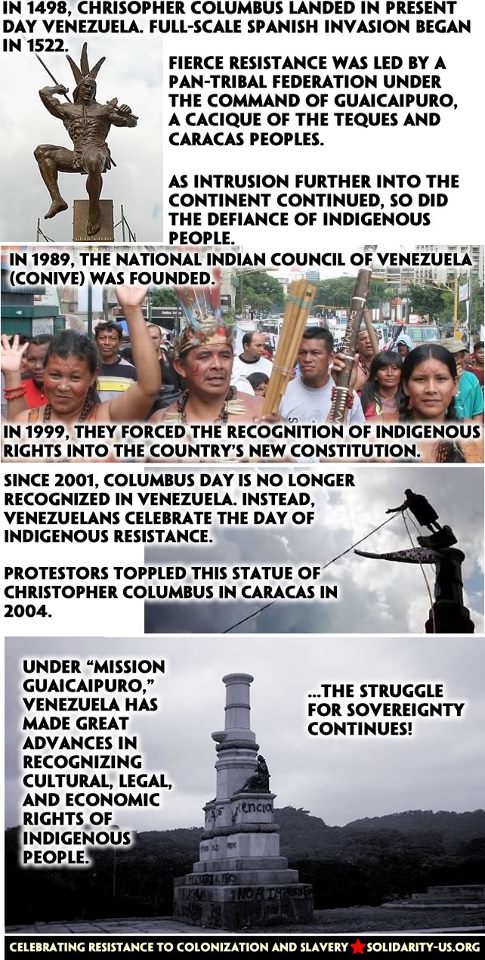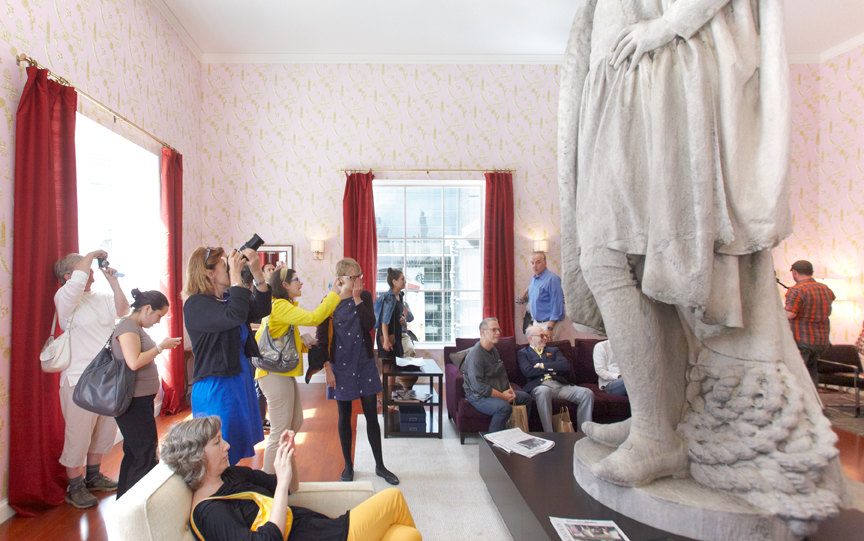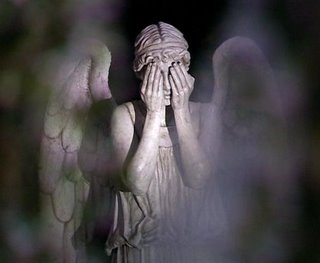“Columbus? Euro trash!”
Jerry Seinfeld
Today in the United States, schoolchildren were given the day off, mail was not delivered and mattresses were discounted 20% to mark five hundred years of colonialism. In Venezuela, people marked Indigenous Resistance Day by re-electing Hugo Chavez, much to the annoyance of the Columbus Day types no doubt. Here in New York, we’re getting ready for a day of action in Columbus Circle on October 13. But see how the Venezuelans took care to pull down Columbus’s statue. These things are dangerous.
What danger did Columbus bring that has come full circle? In that brief instant of geological time since Columbus came in search of gold, it is now the Italians and Spanish who are perceived as the threat to continued world despoliation. It’s a familiar enough story how Europeans accidentally introduced disease and deliberately sent the indigenous population down their mines. Now it’s the Southern Europeans who are perceived as the threat of contagion that might finally kill the capitalist goose with its golden eggs. There’s a certain “native irony” there to use Stephen Turner’s phrase.
The monument to all this is at a key intersection in mid-town Manhattan. According to the Public Art Fund’s website, Columbus Circle is a relic of a past celebration of conquest:
Erected in 1892, this monument was designed by the Italian artist Gaetano Russo to commemorate the 400th anniversary of Columbus’ first voyage to the Americas. Atop the monument is a larger-than-life marble statue of explorer Christopher Columbus, …. He stands on a granite column featuring bronze ships’ prows and anchors that refer to his famous voyage with the Niña, the Pinta, and the Santa Maria.
No sign of the indigenous here. The whole looks out at another monument to the USS Maine,which sank during the Spanish-American War of 1898. Although it was assumed at the time that the fatal explosion was caused by Spanish aggression, later investigation showed that it resulted from:
spontaneous ignition of highly volatile bituminous coal (which the US Navy had recently adopted as fuel as opposed to slower, cleaner burning and far less volatile but more expensive anthracite coal)
That the heavy bitumenous coal is to anthracite what the tar sands “oil” is to standard crude. Perhaps the tarry explosion that launched the American Empire into its long century of global domination will also see it out.
New York’s Columbus monument is currently occupied. There’s a bizarre artwork by sculptor Tatzu Nishi, which creates a suburban living room around the statue. While Nishi may have intended this as a place for contemplation, what we have is a photo-op. It’s become a popular attraction and tickets are often sold out.
The thirteen-foot statue towers over the tourists. Or are they all carefully looking at the statue, making sure never to look away for fear of what the statue might do?
Robert Musil, the novelist, once suggested that the invisible monuments of a city structure its attention by directing “unseeing”:
Like a drop of water on an oilskin, attention runs down them without stopping for a moment
Always present, rarely noticed, these stone forms embody the authority that would first colonize and then have us move on because there’s nothing to see. In recent series of Dr Who, these stone angels turn out to be a petrifying force, sending people back in time. They do so when you’re not looking at them, so you can’t even blink. “Nothing to see here” turns out to be fatal.
It’s as if these imperial monuments are a solid mass of anti-progressive matter, pushing us back into a neo-colonial present.
We need to see Columbus, pull him off his pedestal and send him back like the Euro trash he was–but don’t blink!




Love this entry, Nick. The activist intervention by Nishi is odd and brilliant, and definitely brings a new kind of visibility – or presence – to that monument.